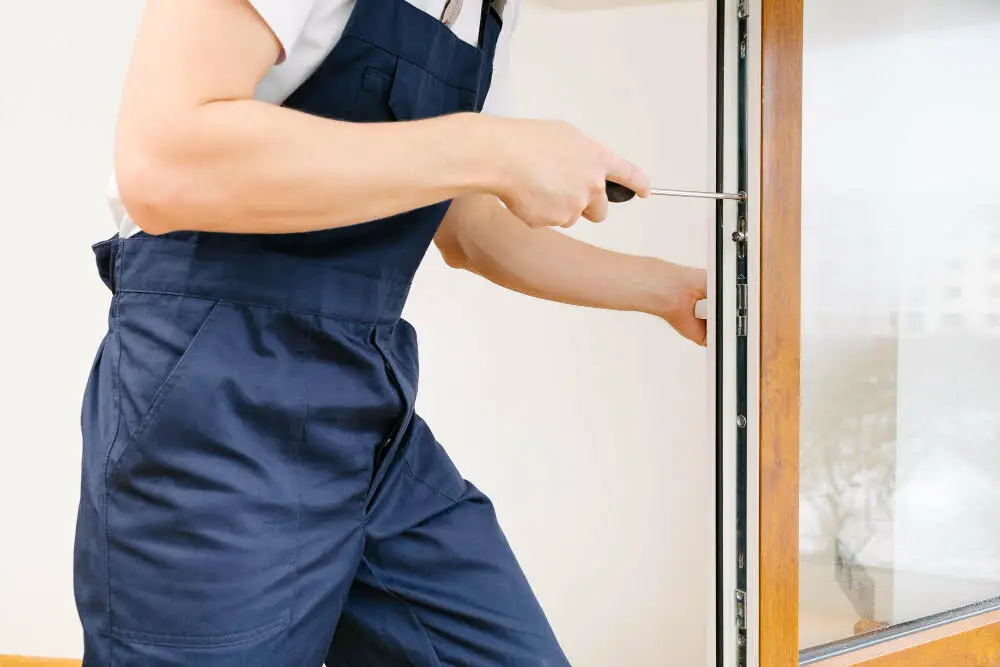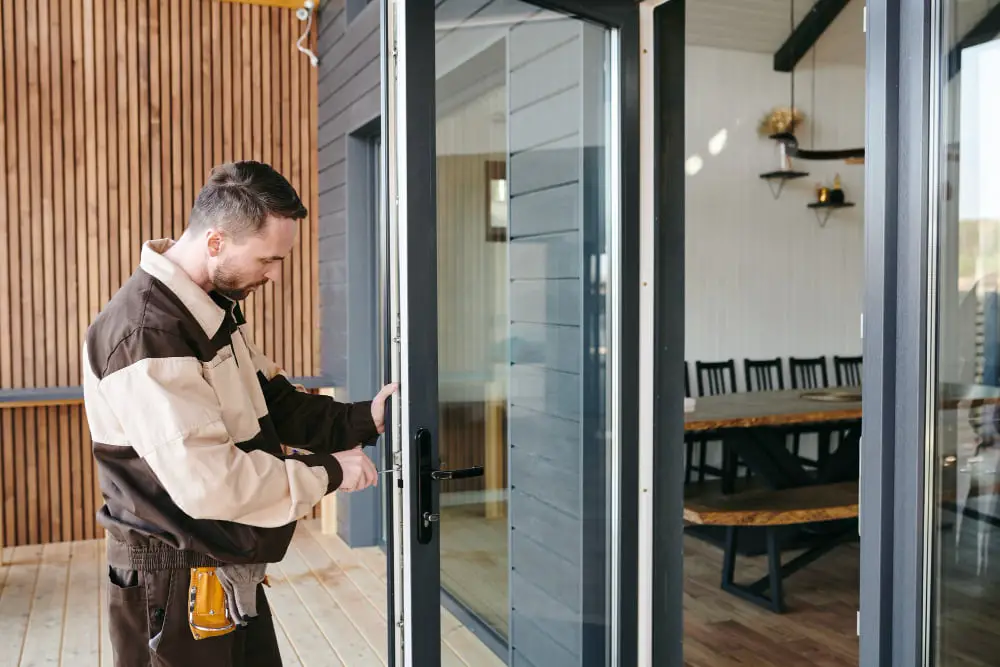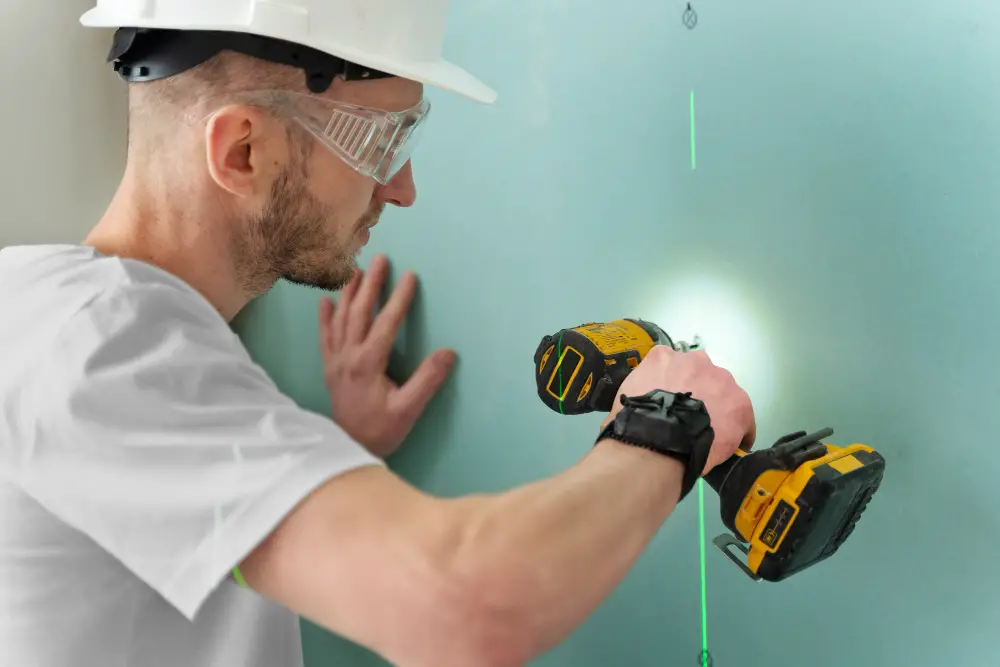Last updated on
Discover the simple steps to adjust your pocket door lock effectively. Ensure smooth operation and enhanced security in no time.
Pocket doors are a great space-saving solution that can add a touch of elegance to any home decor. Not only do they provide privacy, but they also allow for better utilization of living space.
However, like any other door, pocket doors can have issues with their locks over time. A malfunctioning lock can be frustrating and compromise your security, whether due to wear and tear or improper installation.
But don’t worry! In this article, we’ll guide you through the steps to properly adjust your pocket door lock and get it back in working order quickly!
Key takeaways:
- Adjusting the pocket door lock using screws and a hex wrench
- Adjusting the pocket door height using a screw at the bottom of the door
- Adjusting the pocket door side margin using screws on each end of the track
- Cleaning tracks and replacing worn rollers to fix sliding issues
- Gaining access by removing trim or cutting an inspection hole
Table of Contents
Adjusting the Pocket Door Lock

The pocket door lock is an essential component of your pocket door system. It ensures that the door stays secure and provides privacy when needed.
However, it may become loose or misaligned over time due to wear and tear or improper installation.
To adjust your pocket door lock, you will need a screwdriver and a hex wrench (also known as an Allen wrench). First, locate the adjustment screws on either side of the lock mechanism.
Use your screwdriver to loosen these screws slightly.
Next, use your hex wrench to turn the locking mechanism clockwise or counterclockwise until it aligns with its corresponding strike plate on the jamb. Test if it’s working correctly by sliding it open and closed several times while checking for any resistance.
If there is still some resistance after adjusting both sides of the locking mechanism using this method above; then try tightening up all other visible screws around where they connect to their respective holes before testing again – sometimes, just one loose screw can cause problems!.
Adjusting the Pocket Door Height

If your pocket door is dragging or not closing properly, adjusting its height may be necessary. To do this, locate the adjustment screw at the bottom of the door and turn it clockwise to raise or counterclockwise to lower.
It’s important to note that some pocket doors have a separate adjustment for each side, while others have a single screw. If you’re unsure which type of adjustment your door has, consult with its manufacturer’s instructions.
Once you’ve made adjustments on one side of the door using a wrench or pliers as needed (depending on what tool works best), test out how well it slides back and forth along its track before making any further changes elsewhere to avoid over-adjusting anything unnecessarily.
Adjusting the Pocket Door Side Margin

This problem can often be resolved by adjusting the side margin of your pocket door.
You will need a Phillips head screwdriver and access to both sides of your pocket door to adjust the side margin. Locate the adjustment screws on each end of your track and use a screwdriver to turn them clockwise or counterclockwise until you achieve an even gap between your door and its frame.
It’s important not to over-tighten these screws as this can cause damage or misalignment in other areas. Once you’ve made adjustments, test out how smoothly your pocket door slides open and closed before making further changes.
Problems With the Pocket Door Track & Rollers

Over time, dirt and debris can accumulate in the tracks, causing them to become clogged or obstructed. This can lead to difficulty opening or closing your door smoothly.
Another issue that may arise is worn-out rollers. If your pocket door is not sliding as easily as it used to, it could be a sign that your rollers are damaged or need replacing.
Clean any debris from the tracks using a vacuum cleaner or compressed air to fix these issues. Next, inspect each roller for signs of wear and tear, such as cracks on its surface; if they’re damaged beyond repair, replace them immediately.
Access

You need to be able to reach the lock mechanism and make any necessary adjustments. This can be challenging since the lock is inside the door frame, making it difficult to see or reach.
One way of gaining better access is by removing the trim around your pocket door frame. This will give you more room and visibility for working on your lock mechanism.
Another option would be cutting an inspection hole in your drywall near where your pocket door slides into its cavity when opened fully. Doing this gives you direct access to both sides of the locking mechanism without removing any trim or disassembling anything else.
While these methods may seem extreme at first glance, they are often necessary for effective repairs that require full visibility and accessibility of all parts involved in operating a sliding pocket-door system properly.
FAQ
Can pocket doors be adjusted?
Yes, many pocket doors can be adjusted using special tools from around the top of the pocket frame when the door is partially closed.
Why is my pocket door not sliding correctly?
Answer: Your pocket door may be sliding incorrectly due to issues with the track system, rollers, or hardware and components.
Can you fix a pocket door without removing the trim?
Yes, you can fix some pocket door problems without removing trim, but most issues require the removal of select areas of trim.
How can I realign my pocket door for optimal function?
To realign your pocket door for optimal function, adjust the door hangers and track so that the door hangs level and slides smoothly.
What are the common problems with pocket door locks, and how can they be resolved?
Common problems with pocket door locks include difficulty in latching or unlocking due to misalignment, wear, or debris, which can be resolved by realigning the door, replacing worn parts, or cleaning the lock mechanism.
What tools and steps are needed to adjust a pocket door lock properly?
To properly adjust a pocket door lock, you’ll need: a screwdriver and a tape measure, and the steps involve aligning the lock’s internal mechanism, adjusting the heights, and testing for smooth operation.




